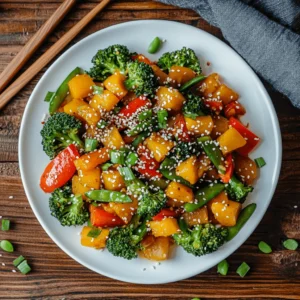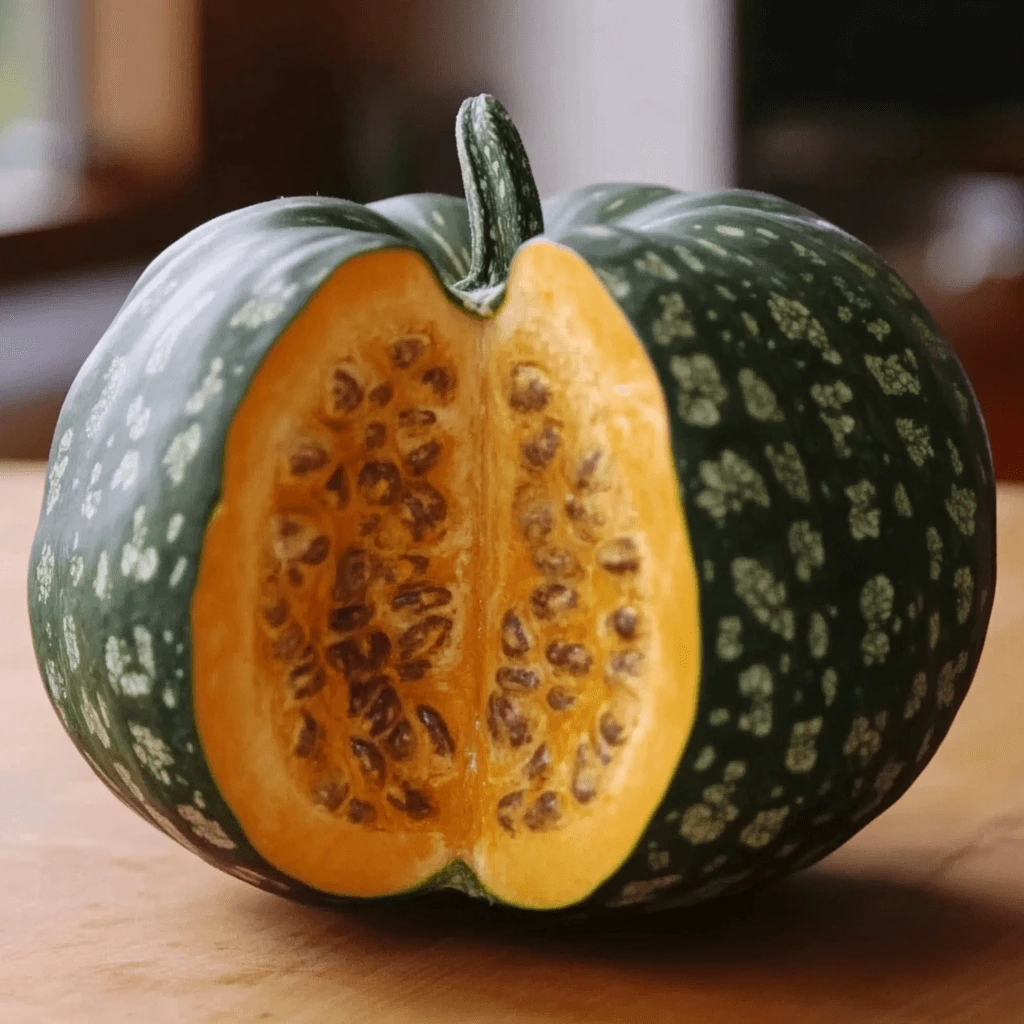If you’re a fan of healthy, plant-based meals with bold flavors, you’re in for a treat! In this article, we dive into the versatile world of kabocha squash, showcasing how you can whip up delicious vegan Chinese dishes quickly and easily. Packed with nutrients and bursting with taste, kabocha squash is a must-have in any plant-based kitchen. Let’s explore how to make the most of this amazing ingredient!
What is Kabocha Squash?
Discovering the Star Ingredient: Kabocha Squash
Kabocha squash, also known as the Japanese pumpkin, is a popular ingredient in Asian cuisine, particularly in Chinese cooking. It boasts a sweet, nutty flavor and a texture that falls somewhere between butternut squash and sweet potato. Whether you roast it, steam it, or stir-fry it, kabocha is a fantastic way to add depth and nutrition to your meals.
Why is Kabocha Squash So Special?
This vibrant green squash isn’t just tasty; it’s packed with essential vitamins and minerals! High in beta-carotene, which your body converts into vitamin A, kabocha is great for your skin, vision, and immune system. Additionally, it’s a good source of fiber, keeping you full and your digestion happy. And did we mention it’s low in calories?
Kabocha Squash in Chinese Cuisine
In traditional Chinese cooking, kabocha is celebrated for its versatility. Its natural sweetness pairs beautifully with savory flavors, making it an ideal ingredient for stir-fries, curries, or even steamed dishes. Plus, its firm texture holds up well in various cooking methods, so you’ll never have to worry about it turning mushy.
Preparing Kabocha Squash for Cooking
Selecting the Perfect Kabocha Squash
The first step in crafting quick and easy kabocha vegan Chinese squash recipes is choosing the right squash. Look for one that feels heavy for its size, with a firm rind and a rich, deep green hue. Slight orange spots are fine and can even indicate ripeness. Avoid squashes with soft spots, cracks, or bruises, as these can spoil your dish faster than you can say, “dinner’s ready!”
How to Cut and Prepare Kabocha Squash
Cutting kabocha squash can feel like tackling a small boulder, but don’t fret—I’ve got you covered! Start by washing the squash thoroughly to remove dirt. Next, use a sturdy knife to slice it in half. (Pro tip: Microwave it for 2-3 minutes to soften the skin slightly.) Scoop out the seeds and stringy bits with a spoon, then cut it into slices or chunks depending on your recipe. The best part? You don’t have to peel it—the skin becomes tender when cooked.
Cooking Methods for Kabocha Squash
Kabocha’s versatility shines when it’s cooked using traditional Chinese methods:
- Roasting: Toss kabocha slices with sesame oil and a sprinkle of salt, then roast until caramelized and tender.
- Steaming: Place the squash in a bamboo steamer and cook over boiling water until fork-tender.
- Stir-Frying: Perfect for integrating into a medley of vibrant vegetables and tofu for a quick, nutritious meal.
Essential Ingredients in Vegan Chinese Cooking
Common Pantry Staples for Vegan Chinese Recipes
Cooking quick and easy kabocha vegan Chinese squash recipes becomes a breeze when your pantry is stocked with the right staples. Ingredients like soy sauce, sesame oil, and rice vinegar are non-negotiable for achieving those classic Chinese flavors. Add hoisin sauce, five-spice powder, and Shaoxing wine (or a splash of mirin as a vegan-friendly substitute) to your collection for extra depth and authenticity. And don’t forget cornstarch—it’s the secret to thick, glossy sauces that cling to every bite.
Fresh Produce That Complements Kabocha Squash
The beauty of kabocha squash dishes lies in their ability to pair well with an array of vibrant vegetables. Broccoli, bell peppers, snap peas, and bok choy are all excellent choices for a stir-fry. Mushrooms, especially shiitake, add an umami punch, while scallions and ginger lend a zesty freshness. Incorporating fresh produce not only boosts the dish’s nutrition but also adds bursts of color and texture.
Key Sauces and Seasonings to Enhance Your Dish
No vegan Chinese recipe is complete without the right sauces and seasonings. Soy sauce forms the salty, savory base, while sesame oil provides a nutty aroma. Add a touch of hoisin for sweetness or chili oil for a kick of heat. Don’t skimp on fresh aromatics like garlic and ginger—they’re the backbone of flavor in many traditional Chinese dishes. If you’re feeling adventurous, sprinkle a pinch of white pepper to elevate the dish with its unique spicy aroma.
Quick and Easy Kabocha Vegan Chinese Recipes

Kabocha Squash and Broccoli Stir-Fry
Ingredients
- 1 small kabocha squash peeled and cubed
- 2 cups broccoli florets
- 2 tbsp sesame oil
- 3 cloves garlic minced
- 1 tbsp grated ginger
- 2 tbsp soy sauce
- 1 tbsp hoisin sauce
- 1 tsp chili oil optional
Instructions
- Heat sesame oil in a wok over medium heat. Add garlic and ginger, cooking until fragrant.
- Toss in the broccoli florets and stir-fry for 3 minutes.
- Add the cubed kabocha squash, soy sauce, hoisin sauce, and chili oil. Stir well to coat evenly.
- Cook for 5-7 minutes, stirring occasionally, until the squash is tender but still holds its shape.
- Garnish with sesame seeds and sliced green onions before serving.

Spicy Kabocha Squash and Tofu Curry
Ingredients
- 1 small kabocha squash cubed
- 1 block firm tofu cubed
- 1 can coconut milk
- 1 tbsp curry powder
- 1 tbsp soy sauce
- 1 tbsp chili paste
- 2 tbsp sesame oil
- Fresh cilantro for garnish
Instructions
- Heat sesame oil in a deep skillet. Add tofu and cook until golden on all sides. Remove and set aside.
- In the same skillet, add cubed kabocha squash, stirring for 2 minutes.Pour in coconut milk, curry powder, soy sauce, and chili paste. Simmer for 10-12 minutes.
- Add tofu back into the skillet, stirring gently. Simmer for another 5 minutes until flavors meld.
- Garnish with fresh cilantro and serve over steamed rice.

Steamed Kabocha with Ginger-Soy Dressing
Ingredients
- 1 small kabocha squash sliced
- 1 tbsp soy sauce
- 1 tsp sesame oil
- 1 tsp fresh ginger grated
- 1 tsp rice vinegar
- 1 tsp sesame seeds
Instructions
- Place kabocha slices in a steamer basket and steam for 10 minutes or until tender.
- In a small bowl, whisk together soy sauce, sesame oil, ginger, and rice vinegar.
- Arrange steamed kabocha on a serving plate and drizzle with the dressing.
- Sprinkle sesame seeds on top before serving.
Tips for Enhancing Flavor in Kabocha Dishes
Balancing Sweet and Savory Flavors
One of the secrets to making quick and easy kabocha vegan Chinese squash recipes irresistible is mastering the balance between sweet and savory. Kabocha’s natural sweetness shines when paired with salty, umami-rich ingredients like soy sauce or miso. Adding a splash of rice vinegar or a drizzle of chili oil can introduce subtle tangy or spicy notes, creating a well-rounded flavor profile. Don’t shy away from experimenting—sometimes, a pinch of sugar or a dash of lemon juice is all it takes to elevate a dish!
Incorporating Traditional Chinese Spices
Spices play a starring role in transforming kabocha squash dishes into culinary masterpieces. Ground Sichuan peppercorns, star anise, and cinnamon add warmth and depth to stews and curries. For stir-fries, consider including garlic, ginger, and scallions—this aromatic trio forms the base of countless Chinese recipes. And if you’re in the mood for something bold, sprinkle on some Chinese five-spice powder; its unique blend of flavors complements the earthy sweetness of kabocha beautifully.
Boosting Umami with Vegan-Friendly Ingredients
Enhance the umami factor in your kabocha vegan recipes by adding ingredients like mushroom powder, nutritional yeast, or fermented black beans. These vegan-friendly options pack a punch and help recreate the deep, savory flavors that are hallmarks of Chinese cuisine. A small touch of sesame oil added at the end of cooking can also amplify the dish’s aroma and richness.
Frequently Asked Questions (FAQ)
Can You Eat the Skin of Kabocha Squash?
Absolutely! One of the best features of kabocha squash is its edible skin. Once cooked, the skin becomes tender and adds an earthy flavor and texture to your dishes. Whether you’re roasting, steaming, or stir-frying, there’s no need to peel it—just be sure to wash it thoroughly before cooking.
What Are Good Substitutes for Kabocha Squash?
If kabocha isn’t available, don’t worry! Other sweet and hearty squashes like butternut squash or acorn squash make excellent substitutes. Even sweet potatoes can work in a pinch, offering a similar sweetness and texture that pairs wonderfully with vegan Chinese spices and sauces.
How Do You Store Leftover Kabocha Squash?
Leftovers? No problem! Store cooked kabocha squash in an airtight container in the refrigerator for up to three days. If you want to keep it longer, freeze it—just portion it into freezer-safe bags or containers. When reheating, gently steam or microwave to maintain its tender texture without drying it out.
Can Kabocha Squash Be Used in Soups or Desserts?
Absolutely! Kabocha’s creamy texture and natural sweetness make it perfect for soups, stews, and even vegan desserts. You can blend roasted kabocha into a silky soup with ginger and coconut milk or transform it into a luscious pie filling with spices like cinnamon and nutmeg.
Conclusion
Embracing Kabocha in Vegan Chinese Cuisine
Kabocha squash is more than just an ingredient—it’s a gateway to creating delicious, plant-based meals that are as nutritious as they are flavorful. With its versatility and natural sweetness, this humble squash can shine in everything from stir-fries to curries, soups, and even desserts. Whether you’re a seasoned cook or a beginner in the kitchen, mastering quick and easy kabocha vegan Chinese squash recipes is an adventure that guarantees both satisfaction and nourishment.
Health and Culinary Benefits of Kabocha Squash
By incorporating kabocha squash into your cooking, you’re embracing an ingredient that’s low in calories, high in nutrients, and perfect for vegan Chinese recipes. Its smooth, creamy texture and subtle sweetness make it a crowd-pleaser for any occasion. Plus, it pairs beautifully with bold flavors, ensuring that your dishes are always exciting and full of depth.
Your Kabocha Journey Begins Here
Now that you’ve got the tools, tips, and recipes, it’s time to roll up your sleeves and let your creativity flow in the kitchen. Remember, the key to great cooking is a balance of flavors, a touch of experimentation, and a lot of love. So why wait? Dive into these kabocha vegan Chinese squash recipes today and enjoy meals that are healthy, vibrant, and utterly delicious!

